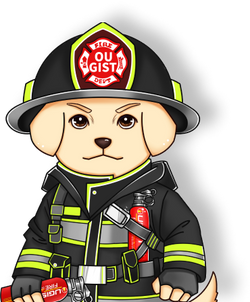Choosing the right fire extinguisher material is a critical decision that can greatly impact the effectiveness of fire suppression. Various fire extinguisher materials are designed to combat specific types of fires, and selecting the best one for your environment is crucial. In this blog post, we'll explore the different fire extinguisher materials available and guide you towards making an informed choice.

Understanding Fire Extinguisher Classes: Fire extinguishers are categorized into different classes based on the types of fires they can effectively suppress. Each class corresponds to a specific type of fuel involved in the fire:
- Class A: Ordinary combustibles like wood, paper, and cloth.
- Class B: Flammable liquids such as gasoline, oil, and grease.
- Class C: Electrical fires involving live electrical equipment.
- Class D: Combustible metals like magnesium and titanium.
- Class K: Cooking oil and grease fires often found in kitchens.

Choosing the Best Fire Extinguisher Material:
-
Water (Class A): Water is a highly effective extinguishing agent for Class A fires, as it cools down the flames below the ignition temperature. It is essential to use water-based extinguishers only on Class A fires, as using them on other classes can be dangerous.
-
Foam (Class A and B): Foam extinguishers are versatile, effective against both Class A and Class B fires. The foam creates a barrier that prevents the release of flammable vapors and cools the fire.
-
Dry Chemicals (Class A, B, and C): Dry chemical extinguishers are available in various types:
- ABC Powder: Suitable for Class A, B, and C fires. It works by interrupting the chemical reaction of the fire.
- BC Powder: Effective against Class B and C fires, including flammable liquid fires and electrical fires.
-
Carbon Dioxide (CO2) (Class B and C): CO2 extinguishers displace oxygen, smothering the fire. They are suitable for Class B and Class C fires, as well as electrical fires. However, they may not be effective on Class A fires.
-
Wet Chemicals (Class K): Wet chemical extinguishers are designed specifically for Class K fires, which involve cooking oil and grease fires. The wet chemical creates a cooling and smothering effect.
Factors Influencing Your Choice:
-
Risk Assessment: Identify the types of potential fires you are most likely to encounter in your environment. Consider both the fuel sources and equipment present.
-
Occupancy and Usage: The type of building or area (residential, commercial, industrial, etc.) and its usage will influence the choice of fire extinguisher material.
-
Regulations and Codes: Different industries and regions may have specific regulations regarding the types of fire extinguishers required.
-
Training and Accessibility: Ensure that the chosen fire extinguisher material is suitable for your staff's training level and readily accessible in case of an emergency.
- If you need a home fire extinguisher, you can choose our OUGIST products.


